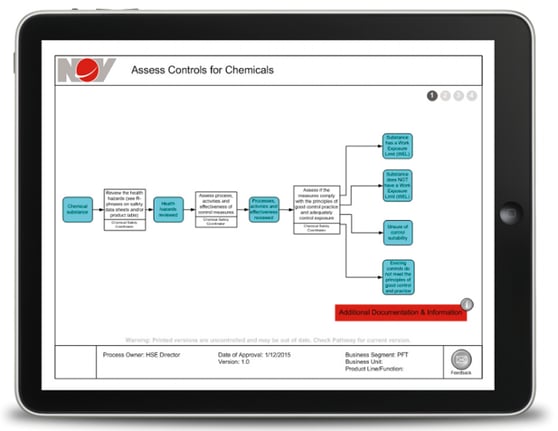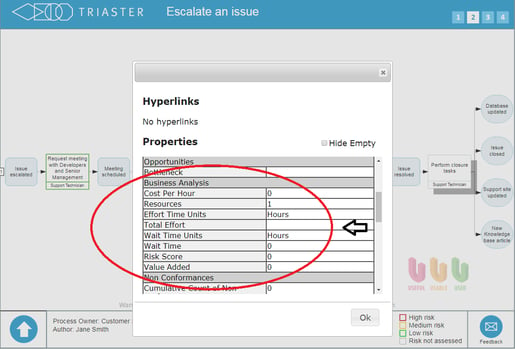When Enterprise Resource Planning projects are incorrectly implemented and used, this can cause real problems and inefficiency in an organisation. However, the problem may not be the ERP or employee; the problem may be driven by process problems that Enterprise Resource Planning systems aren't set up to deal with.
Successful Enterprise Resource Planning Implementation
It is very tempting for organisations to take their existing business processes and automate them straight away when implementing Enterprise Resource Planning projects but according to Ed Featherston, Vice President and Principal Architect at Cloud Technology Partners (a consulting company), "you must take the time and make the effort to analyze those processes as part of your ERP requirements gathering. Implementing a new ERP system is an opportunity to identify and improve/redesign your business processes. Automating a bad process only makes a bad process run faster.”
The point here is that implementing an Enterprise Resource Planning system may help to automate a process and, in theory, make carrying out tasks easier, but easy doesn't mean efficiency or quality. Automating a bad process still leaves you with a bad process.
If you're interested in learning how other organisations have successfully solved their process problems then I would recommend  - a case study which chronicles the process improvement initiatives of 8 businesses that all managed successful business process improvement.
- a case study which chronicles the process improvement initiatives of 8 businesses that all managed successful business process improvement.
The Problem With Enterprise Resource Planning Projects
Too many companies are failing to identify their As-Is processes and implement a To-Be improvement model to their existing operations. Without the correct As-Is (capturing the process in its current state) and To-Be (modelling the process in its future, improved state), then the migration to an ERP system will have issues.
It's in your interest to identify possible process breakdowns and waste so that the necessary adjustments can be made to outdated and inefficient processes before just moving the flawed process onto an ERP platform.
Sure, Enterprise Resource Planning systems tend to have integrated Business Process Management functionality, but if you are looking for the ability to do more complex activities such as modelling, designing, executing and monitoring business processes for the purpose of continual improvement; you'll need a BPM system.
BPM is able to manage processes that aren't covered by Enterprise Resource Planning projects and although you could have, for example, an ERP implementation and BPM system that are independent from one another, an integration of the two is often the best bet.
BPM adopts a process-centric approach (process management and improvement) while ERP systems focus on organisational functions and as such, in order to fix a process problem so that it can be moved into ERP systems, it is necessary to have a system that has more complex Business Process Management and Improvement capabilities.
Enterprise Resource Planning Projects: How Process Maps Help the User With ERP Systems

ERP and BPM are often considered to be the same thing, but they are not. When a BPM system is integrated with an ERP system, the BPMS adds a layer of management and control for processes across the entire organisation. A BPM can tie together systems, separate business areas, applications and repositories.
In a nutshell, BPM provides a clearer and more accurate view of the organisation, allows employees to view all of their processes, share processes across departments – even across the supply chain.
The point is that BPM manages and improves business processes because that's exactly what it's designed to do. Process libraries host existing policies, procedures and forms. Process mapping tools within a BPM system can:
- Capture your processes in their current state
- Demonstrate compliance with quality certifications like ISO
- Assigns levels of risk to different process steps in order to mitigate possible process breakdowns
- Captures and visualises value adding and non-value adding process steps by capturing and measuring time, effort and cost data
- Assigns RACI (responsibility, accountability, consulted, informed) to processes
A process map can become extremely complex (depending on what level of detail you need), so it makes sense to use the right tools (a dedicated BPM system) to get the job right first time.
Your processes and procedures may be failing within an Enterprise Resource Planning project because they are not easy to use, not capable of communicating effectively across departments and not easy to assign responsibility and risk to.
If a salesperson or call center employee fills out an order form with the wrong information, the beginning of this process (fulfilling an order), will then be carried out erroneously at every subsequent step of the order until the problem has been caught and stopped, or more likely, the customer sends the wrong product back to exchange it for the right one.
Here's an example of an erroneous order process:
- Manufactured – Shipped - Opened (by the customer creating an unsatisfactory response) – Returned – Re-ordered – Manufactured (a new product) – Shipped – Opened (less customer satisfaction) – Opportunity Lost (no customer referrals/word of mouth)
Here's an example of a process working the way it should:
- Manufactured - Shipped - Opened (satisfactory response) - Opportunity (customer referral)
There is more waste in this process than I have shown - there is a large amount of waste even in processes that function without errors - but you get the idea of how costly a process failure can be by the fact that everything shown in red above will be waste. None of it has value. All of it is pure cost in time, money and effort and it takes more than twice as many steps to deliver the correct product as a process working as it should.
Mistakes are not included in process steps because it is a process breakdown (process breakdowns are not expected and do not add value); so any process that includes more steps than originally intended can only mean cost in time, effort and money that can never be recovered.
Good process mapping tools will not only identify process problems and model the best ways to solve them, they also assign risk levels to processes so that the most potentially problematic processes can be a focus of more strenuous quality control and accountability.

BPM helps an Enterprise Resource Planning System like SAP because it manages what goes on in Enterprise Resource Planning projects more effectively. It allows effective instructions for employees, cross department communication and as previously mentioned, it ties together systems.
Enterprise Resource Planning Failure: Where Problems Commonly Arise
ERP systems like SAP are only as good as the setup. The system is designed to work with the information its given and if the information fails, there will be an Enterprise Resource Planning failure. Here are some of the most common problems that arise after ERP implementation...
- Data Problems – Inaccuracy is a massive problem for ERP implementation and if something such as inventory is inaccurate then your ERP system will be useless. Duplicate part numbers and vendor numbers, and inaccurate costing data will cause an Enterprise Resource Planning failure
- Undermining the System – The most accurate and efficient scheduling system in the world won't help you if it is being undermined by your workers or senior managers – assigning RACI to processes can help with this
- Communication Problems – ERP systems work best across 'open' departments where teams communicate. However, if the sales team doesn't talk to the production team and the production team doesn't talk to engineering then process failure is inevitable – one of the best features of a BPM system is its capability of breaking down silos and creating a platform for effective communication across departments and throughout the supply chain
- Muddled Measuring – How does your organisation measure efficiency? If the answer is 'many different ways', you might have a problem. Companies often suffer process breakdowns when asking managers to do one thing and measuring them a different way. Asking a factory to ship products according to customer delivery dates and then measuring the plant in 'tons produced' may mean that the plant will maximise their tonnage by shipping large orders first before the earliest due dates
Solving these problems involves implementing continual improvement solutions and solving business process problems.
BPM is great at creating a standard way of working in organisations to improve employee efficiency (by looking at the process as the problem), but also linking tasks to the right people (via RACI) so that organisations know who is responsible, who is accountable and who should be consulted and informed regarding processes.
This essentially means culture is created through effective process management and quality is assured through improvement tools and structured communication across teams and departments.
It may sound time consuming to overhaul culture to include every employee, but the potential for improvement can be extremely rewarding.
If you're interested in learning how other organisations have successfully implemented BPM into their organisations to manage and improve their processes, I recommend  .
.
Related Articles
How Will Process Mapping Help an Enterprise Resource Planning System?
RACI Matrix: Chart, Model and Discover How to Identify the Process
How to use your Triaster Business Process Management (BPM) System to transfer business knowledge
Written by Brad Fagan
Brad joined Triaster in 2016 as our Content Marketing Executive hailing all the way from Middle Earth (the film version, not the book) – New Zealand. Brad’s video skills soon resulted in new weekly Triaster videos and his individual touch in some of the Connector and blog articles. In June 2018 Brad moved to Germany with his wife Lynn.